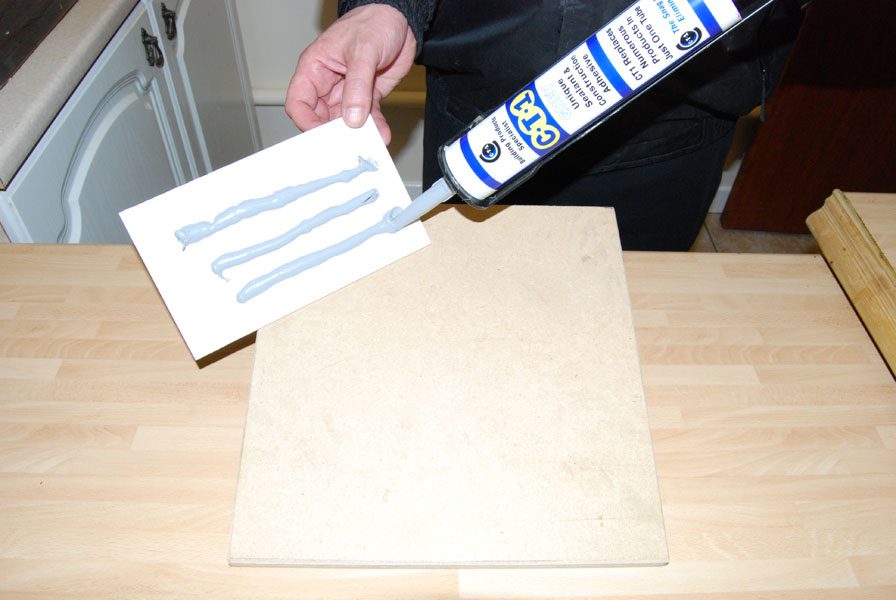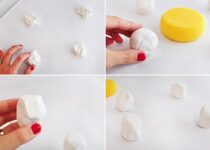How to glue plastic to wood
Wood and plastic are a popular combination right now, and as a creator, it is understandable that you wish to test your abilities in this trending area. From practical tools to attractive household decorations, wood and colorful plastic together have become a standard of quality and beauty that is hard to exceed.
A lot of creators have started recycling old plastic and using them with recycled wood to transform the way we view woodwork and plastic generation. Now, what can be more beautiful than that?
Since both wood and plastic are items that make us accountable to the planet, it makes sense to use recycled plastic and wood for all our work.
Further, recycled wood and plastic also have a rustic beauty in them and are easier to fasten together.
Can wood and plastic gluing even exist in the long run?

Yes, it can, and this is what we will talk about today.
Advantages of gluing wood and plastic together
There are infinite reasons, from trend to practice, that might make you want to use wood and plastic together by gluing them. It is a very simple step; even beginners can nail a perfect ten score.
If you are struggling with making wood items alone – or want to minimize your use of plastic – creating these hybrids can be the best thing you try this week.
It makes tools more useful.
As mentioned before, using plastic and wood together make any item more useful. Plastic increases the durability and range of use of any wooden tool, whereas wood can provide structure and beauty in areas where average-quality plastic fails.
That is why you should never avoid creating hybrids that maintain the needs of all your customers and yourself in one place.
Reduces flammability
Sometimes it is a good idea to coat certain parts of a wooden item or tool with plastic to reduce the flammability of that product. Intern, many utensils are plastic but employ wooden handles to solve the insulation issue.
Therefore. If flammability is a concern, using fire-resistant glue between the two parts can relieve a lot of stress about your project.
Plastic has great properties.
Apart from the properties we mentioned above, plastic has many great qualities which make it a worthy raw material. Plastic is one of the most versatile raw materials, and almost every property can be found in one of the wide plastic varieties to exist.
It is lightweight, tensile, waterproof, and insulated. This means combining wood with plastic in your project can increase its usability. You can use this combination to create ideas that didn’t exist before!
It makes items look more attractive.
Indeed, both plastic decor on wooden items and wooden decor on plastic items make the overall project a lot more attractive. Attractiveness might not be the only reason you Undertaker this hybrid project, but it was definitely the first thing to strike a buyer’s eye. An attractive item is, therefore, always a plus point. besides that you can spray paint on the wooden surfaces also to make it look more attractive easily.
Reduces the cost
Using plastic with wood definitely reduces the cost of the entire project. In terms of labor as well, a lot of costs are reduced just by employing plastic in certain areas rather than going for an entire wooden project if it does not serve your aesthetic or practical needs.
Gluing is an inexpensive process much better than other ways of fastening the two materials together.
It is the best method.
Once again, it is by far the best possible method of fastening the two materials together for the creation of any item. It is not labor intensive, and many types of wood and plastic do not respond well to nailing and screwing processes.
These end up causing cracks and punctures on the surfaces, which further get infested or can lead to bigger cracks. Therefore it is the best method and also the fastest one to use glue for your wood and plastic project.
Eight steps to make glue and plastic stick together, and last
It is finally time to look at the eight key steps to ensure that the process of gluing wood and plastic together is successful and that the projects we are creating last for a very long time. How can we make the glue do its job properly?
Cleaning the items thoroughly.
Material surfaces, especially wood, can often have a lot of oils and gunk on the surface, which can come in the way of the glue doing its job. It is, therefore, important to clean the surfaces and get them dry before starting the process of fastening them together.
Creating friction on the surfaces of the items
A surface with good friction is always more absorbent of items like glue and paint and can stick better with other surfaces. They would come in different qualities and types and are often not the kind that will respond well to glowing because they have no surface friction.
Similarly, plastic also comes in smooth surfaces which struggle to accept paint or glue. Therefore a preceding step that we require for lasting effects is to sandpaper both surfaces 2 to 3 times.
Priming before gluing
There are many primers made specifically for the gluing process. Priming the wooden surface before applying Fevicol or other glue is a common practice as it makes the wood receptor the item in question.
There are many affordable primers available in the market for this job, but make sure you know which primer goes well with the kind of glue that you are planning to use for the project. If you want to follow up this step with contact cement, then you want to allow for a receptor primer to that as well.
Using high-quality glue
Super hold glue and hot glue are commonly used for small projects that combine plastic and wood. For bigger projects, many strong types of glue are available for wooden surfaces. These high-quality professional blue options work very well for hybrid items as well.
It is always a good idea to do some amount of research on the particular brand of glue in 10 to purchase before going in on the project.
Let it dry in heat and light.
Giving your project ample time to dry out in an atmosphere that facilitates fast drawing is the best thing you can do to get your project ready and fit for display. The glue should dry quickly, and when it comes to hot glue, you should always work from the first step in an environment that is full of light and good dryness.
Also, use proper standing techniques to further the gluing process.
Repeat the cycle a few times
It is never a bad idea to glue a single area multiple times in several succeeding steps after each step dries out. At the same time, any creator should be wary of overdoing this process as it can have the opposite effect.
Too much glue makes the setup hard to dry out and can make the project look messy, whether big or small.
Add contact cement
If the surfaces of both the wood and the plastic are too little in contact or the surfaces are too complex for the glue to work properly, you can always use contact cement instead.
You can also add contact cement and glue, which gives great results when done properly. Adding contact cement is a bit harder than adding blue and night and requires some practice.
Cover with a layer of paint or varnish
Another step you can take for great quality finishing is to cover the glue with a layer of paint or varnish. It will act as an additional protectant against the atmosphere and hold the two pieces together even better.
Varnish gives a transparent gloss to your project, while painting will be an opaque solution that adds to the color and vibrancy of what you are making.to know if you can use acrylics on plastic surface then read this article about it.
Conclusion
Gluing wood and plastic together can be hugely an activity after we simply remove how stressful and confusing it might be. That is why our article intended to do that exact thing so that you can start on your fastening process without delay and not make the mistakes that set beginner projects apart from advanced ones.

FAQs
How much time does it take for wood to be glued to plastic?
Professional glue can take up to 24 hours to dry and cure when glued between plastic and wood.
Can we use hot glue to glue plastic to wood?
Hot glue works very well when the items in contact have small surfaces and one is lighter than the other. Using hot glue for heavy surfaces might be a bit more tricky, but the fastening processes are equally effective once the hot glue has dried and settled. if you have applied hot glue at wrong place and want to remove it then read about removal in this article.
How long does contact cement take to dry on plastic to wood?
Contact cement is designed to dry whenever it comes in contact with the air; therefore, this kind of cement dries within 2 to 3-hour time. However, similar to professional glue, it might be a good idea to give it a 24-hour curing time before moving on to the next step.

Being associated with art and craft field since decades as a hobbyist and life long learner has given me an opportunity to learn many new things related to art, craft, paints and pottery which i am trying to share with your guys on this website. I have expertise of being professional painter and potter for the last 20+ years
I have learned mind blowing cool tips and insights which makes me a person with ability to improvise and come up with creative ideas and solutions to make stunning and impeccable art pieces of all types which are adored by people across the globe on this website and other platform.


